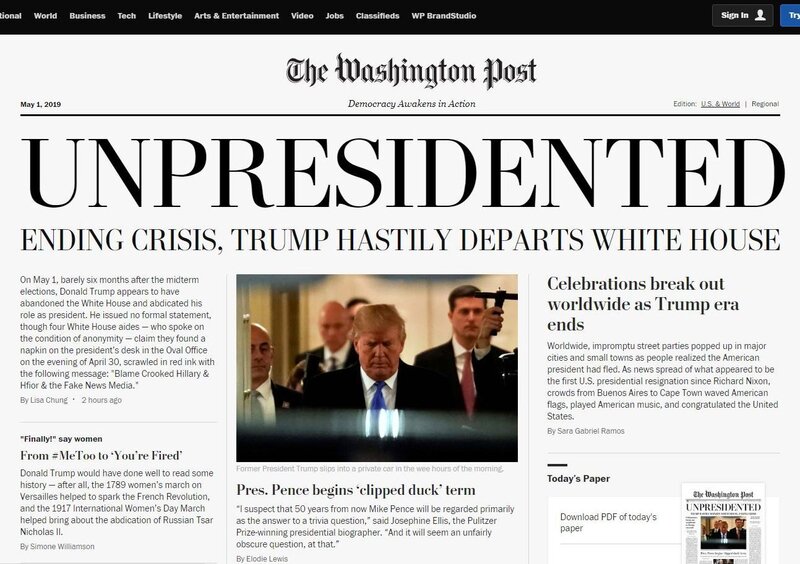by Noah Wolf | nw597116 (at) ohio (dot) edu
 |
| A fake edition of the Washington Post was distributed around the nation's capital earlier this year, but this fake news was supposed to be "a dream ... not a deception." courtesy NPR |
Fake news is an incredibly prevalent term in American society, largely thanks to President Donald Trump. According to the Trump Twitter Archive, the President has tweeted about "fake news" or "fake media" 595 times since his inauguration. He's mentioned it nine times in the past week alone. But Pres. Trump isn't actually talking about fake news. He's trying to equivocate actual, credible, fact-checked news outlets that tell the truth to scam websites, which strive to do nothing other than deceive the public, often for a poorly-veiled political gain. The fake news that Pres. Trump is talking about is not real fake news. (And yes, I do note the inherent oxymoron in the term "real fake news," but I think you get the jist.)
Unfortunately, real fake news exists. But why is it out there? How does it get shared and distributed? And how does fake news turn into real impact? These are the questions to be explored.
Created Politically, Shared for the Spectacle
Fake news is mostly created by outlets that are trying to deceive the public for their own benefit, or at least for the benefit of a candidate or cause they agree with. The most common way to do this is by making outlandish claims about an opponent that people have to click on. You don't create fake news without some sort of objective behind it.
But according to a study by two Yale professors, most Americans who share fake news don't do it for inherent political gain; it's simply because they can't tell it's fake.
A popular realm of thinking surrounding fake news seems to agree with this Julius Caesar quote: "Men willingly believe what they wish to be true." But the facts in the study simply don't support that view. People fall for fake news not because they want to believe it, they simply can't tell that it isn't true. Therein lies the most immediate concern about fake news: its goal to misinform the public is working.
Fake News, Real Impact
While fake news can seem like it's all in good fun, its impact can never be contained to that. One of the most obvious impacts, especially when it comes to elections, is that people can be swayed to vote one way or the other based on false information that they believe to be true. But that has proved to be one of the most tame ways that fake news has impacted real people.
One of the most high-profile victims of fake news was the Comet Ping Pong pizzeria in Washington, DC, which was linked to a fake scandal supposedly implicating dozens of top Democrats, including former Secretary of State Hillary Clinton. Based on a litany of false information surrounding this fake scandal, dubbed "Pizzagate," Comet Ping Pong was faced with an active shooter in December 2016, and attempted arson earlier this year.
But there are dozens of victims of fake news stories. Parents of massacred children that are harassed because people view them as "crisis actors." Board of Elections offices bombarded with phone calls accusing them of fraud. Publishers of newspapers mocked with fake stories designed to look real.
When someone faces backlash after they are the subject of a news story, that is one thing. But to implicate real people in completely contrived scandals is unconscionable.
The impacts of fake news aren't always that obvious nor that severe. But they're never positive.
No comments:
Post a Comment